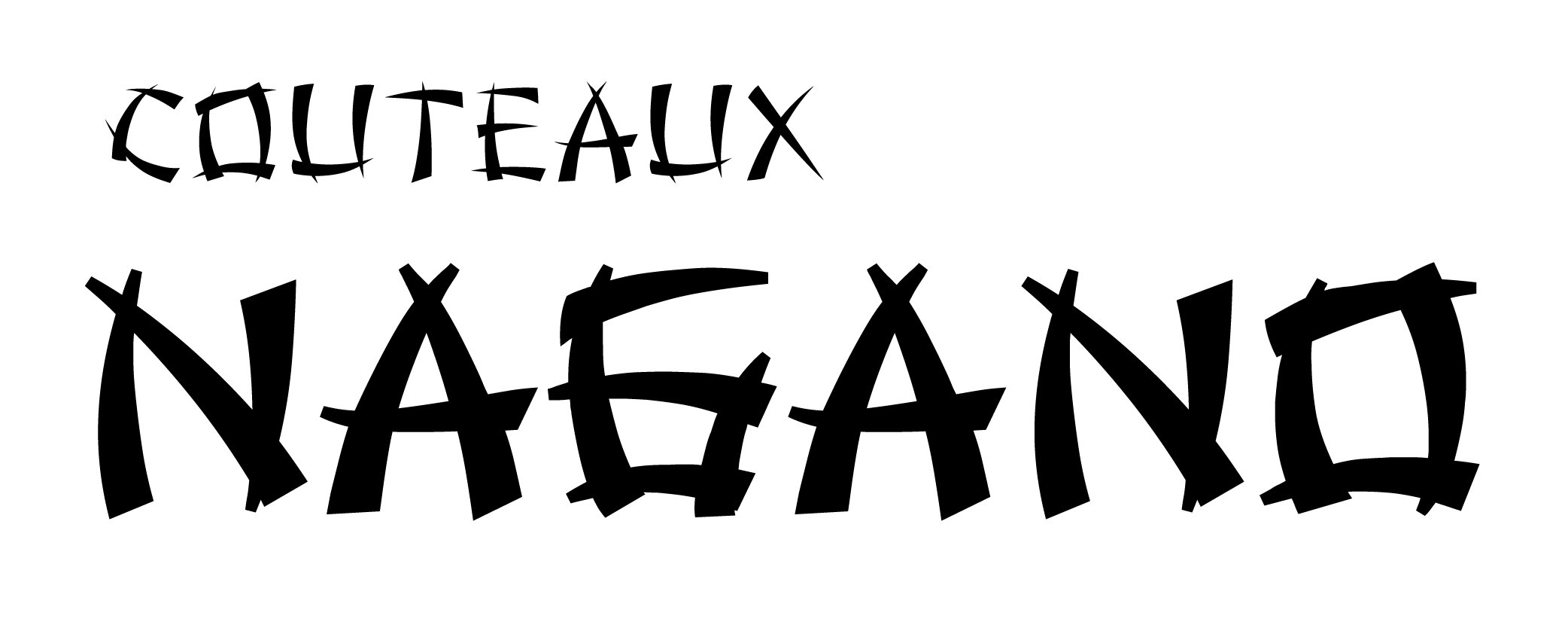This article introduces you to the two most popular and widely used kind of steel for making kitchen knives; the high carbon steel and the stainless steel .
HIGH CARBON STEELS
Shirogami (White Steel) :
Shirogami steel (Shiro = White, Gami = Steel) is a steel which is very pure and similar to the traditional steel of Japanese swords. Shirogami has the advantage of being ultra sharp, but rusts more easily if poorly maintained. Premature oxidation can be easily avoided if the knife is wiped down immediately after use. Shirogami steel has a good edge retention, but is more fragile than Aogami steel. Shirogami Steel # 1 is probably the sharpest of steels and harder in terms of HRC (Rockwell Hardness Unit), on the other hand it is more brittle to chips and requires sharpening more often than Aogami Steel. A small grayish layer called "patina" will naturally form on knives made of high carbon steel; the knife will come to life and you will create its own story.
Like all high carbon steel it is very important to wipe off the blade immediately after use . It is also advisable to maintain it with the Couteaux Nagano Camellia oil and to use our rust remover if ever a reddish color forms by mistake.
- Shirogami # 1:
- HRC 65+;
- Highest carbon content;
- VERY sharp, probably the sharpest of all, but more fragile than other steels;
- Very easy to sharpen;
- A chip can easily appear if our usage tips are not followed. Nuts, bones, frozen foods and anything that is hard are definitely to be avoided.
In the Shirogami # 1 category we have the collection Tanaka Shiro .
- Shirogami # 2:
- HRC 60-61;
- Better edge retention than # 1, but less sharp;
- Very easy to sharpen.
Aogami (Blue Steel):
Aogami steel (Ao = Blue, Gami = Steel) is a very good steel for knives. It offers an excellent sharpness, a very good resistance to keep its cut, is very durable and has the advantage of being less fragile than Shirogami Steel. Chromium and tungsten are added to Shirogami steel to obtain Aogami steel. Like all high carbon steels, a small grayish layer called "patina" will form naturally, the knife will come to life and a unique story will be attached to it.
Like any high carbon steel, it is very important to wipe off the blade immediately after use . It is also advisable to maintain it with the Couteaux Nagano Camellia oil and to use our rust remover if ever a reddish color forms by mistake.
- Aogami # 1:
- HRC of 65;
- Very sharp;
- Very easy to sharpen;
- More resistant than Shirogami steels;
- Good edge retention.
- Aogami #2
- HRC 63-65;
- Very sharp;
- Very easy to sharpen;
- Less fragile;
- Excellent edge retention
- An excellent choice.
In the Aogami # 2 category we have the Tanaka Ao collection
Aogami Super (Blue Super):
Aogami Super steel (Ao = Blue, Gami = Steel) is an improved version of the excellent Aogami steel. Molybdenum and vanadium are added to the recipe. For knives, the Aogami Super is an excellent choice of steel. It's not for nothing that there is "Super" in its name. The Aogami Super offers an excellent edge, the best edge retention, very durable and less fragile than ithe Shirogami and Aogami Steel. However, this material also has a higher chance of oxidation than Stainless Steel if the knife is not wiped clean after use. Like all high carbon steels, a small grayish layer called "patina" will form naturally, the knife will come to life and a unique story will be attached to it.
- Aogami Blue Super:
- HRC 63-64;
- The best edge retention;
- Very sharp;
- Very good resistance;
- Easy to sharpen.
STAINLESS STEEL:
There are many kinds of Stainless Steel but in general this steel offers a sharp edge, less maintenance and very little chance of rusting compared to High Carbon Steel.
Here we will see a few of them.
VG10:
VGold 10 is a very high quality stainless steel. This steel is very hard and also very resistant. It has a great edge-preserving capacity and is surprisingly easy to sharpen.
- HRC 60-61
SG2:
The SG2 is very similar to the VG10, but was designed more recently than its colleague. SG2 is a high carbon alloy stainless steel which has been pulverized very fine grain. This process results in a very homogeneous structure in the steel, which makes the blade easier to sharpen and very durable. The steel does not rust and cuts very, very well.
- HRC of 64
Ginsan:
Ginsan is a fine grain, high carbon stainless steel, which offers the cutting feel and ease of sharpening of carbon steel. The cut quality is similar to that of a Shirogami steel.
- HRC from 59-61
STAINLESS STEEL CLAD:
Now that you know the High Carbon Steel and the Stainless Steel, it is now time to tell you about a kind of knife steel often called "Stainless Clad". In short, it is a knife that has a core in High Carbon Steel and an outer layer in Stainless Steel. These knives are very popular for their ability to cut like high carbon steels but with the maintenance of a Stainless Steel.
In this category we have:
- The Hana Series collection (Core steel of Aogami Super with Stainless Clad)
- The Miki Tsuchime collection (Core steel of Shirogami # 1 with Stainless Clad)
A small table of chemical compositions:
 Reference: Hitachi Metals Ltd., YSS Kokyuhamonoko
Reference: Hitachi Metals Ltd., YSS Kokyuhamonoko


 Reference: Hitachi Metals Ltd., YSS Kokyuhamonoko
Reference: Hitachi Metals Ltd., YSS Kokyuhamonoko